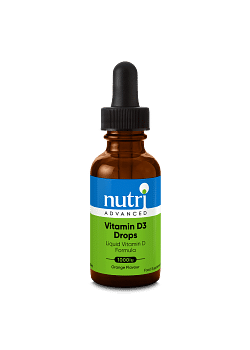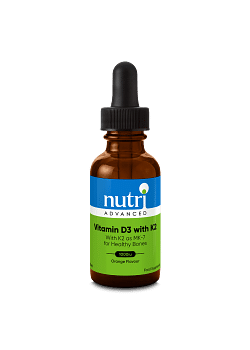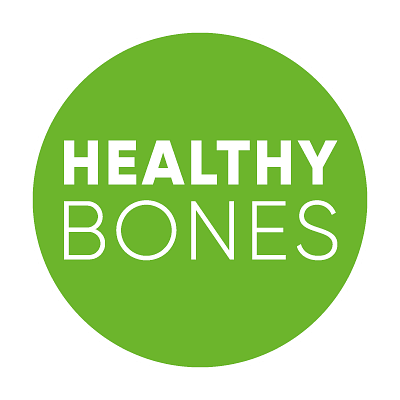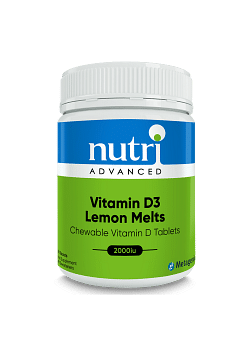How To Support Optimal Vitamin D Levels In Babies And Children
Why you can trust Nutri Advanced Every article on our site is researched thoroughly by our team of highly qualified nutritionists. Find out more about our editorial process.
Vitamin D, babies & children – What you need to know
Vitamin D is an essential nutrient needed at every stage of life, and it is especially important during infancy and childhood. Vitamin D deficiency is common in children and this can have widespread effects on immediate and longer term health, yet there is a significant lack of awareness and much confusion around vitamin D supplementation. In this article we take a closer look at why the ‘sunshine vitamin’ is so important during the early years and what you can do to support optimal levels during this critical time.
Why is vitamin D so important for babies and children?
It is well known that vitamin D is vital for the development and maintenance of healthy bones and teeth. And severe vitamin D deficiency is the cause of most cases of devastating bone-softening diseases such as rickets and osteomalacia. The importance of vitamin D for babies and children extends way beyond bones and teeth however; vitamin D receptors (VDR) have been identified in nearly all tissue types throughout the body and this tells us that vitamin D acts not just on the skeletal system but on almost every other body system too.
Vitamin D is important for:
• Immune system function
• Immune balance
• Cognitive development
• Learning & behaviour
• Mood
• Sleep
• Heart health
• Muscle function
• And more
In addition, vitamin D has vital roles to play in protecting against auto-immune and inflammatory health problems.
Where does vitamin D come from?
Vitamin D is very different to most other essential nutrients in that our major source is not food but sunshine; hence why it is often nicknamed the ‘sunshine vitamin’. Our bare skin can make vitamin D when it comes into contact with the sun’s UVB rays and this is where around 80 – 100% of vitamin D comes from. Very few foods contain vitamin D; wild, oily fish is the best source, followed by whole milk, egg yolks and mushrooms. However, the amount we can get from even the best food sources is tiny compared to what our skin can make in response to even just a relatively short period of sunlight exposure.
What increases the risk of vitamin D deficiency?
• Breastfed babies and all children under the age of 5 are at higher risk of deficiency
• Limited time spent outside with bare skin exposed to the sun
• Obesity & underweight – Both of these health states increase the risk of deficiency
• Darker skin tone – African & Asian populations have in-built sun protection and require at least 3-5 times longer sun exposure
• Liberal use of sunscreen or extensive skin covering inhibits vitamin D production in the skin
• Low magnesium levels – Magnesium is an important mineral needed for vitamin D metabolism and Western diets typically don’t provide enough.
• Genetic factors within vitamin D metabolism pathways are known to affect deficiency risk
• Where you live – Deficiency risk increases the further away from the equator you live. In northern latitudes between November – March there are insufficient UVB rays to produce vitamin D
• Time of year – Risk of deficiency increases during the autumn and winter months in the UK
Vitamin D deficiency in children
Whilst there is no universal consensus on the biochemical definition of vitamin D deficiency, UK guidelines typically define deficiency and sufficiency levels as below:
• Severe Deficiency: < 25nmol/l
• Deficiency: < 50nmol/l
• Sufficient: > 50 nmol/l
It is important to note however that many experts on vitamin D continue to question whether the ‘sufficiency’ levels are set too low and will typically recommend aiming for a higher ‘optimal’ level of at least 75 nmol/l.
How much vitamin D should children take?
Advice from Public Health England is that babies under 1 and all children aged 1 -4 are advised to take a daily maintenance supplement containing 340 - 400 IU vitamin D (as vitamin D3 / cholecalciferol) all year round. Exceptions are babies receiving 500ml or more fortified formula milk daily (containing vitamin D), or breastfed babies where mum is certain that her breast milk contains optimal daily amounts. Getting enough vitamin D via breast milk is a challenge however and for most breastfed babies, a daily supplement will be required. Children over the age of 4 should take a daily supplement containing 400 IU vitamin D during the Autumn and Winter months (October – April). This advice is for all children, even if they eat oily fish and spend lots of time outside.
Health experts question whether daily supplement levels are too low
It is important to note that the aim of this advice from Public Health England is to provide a maintenance dose of vitamin D to protect children’s bone and muscle health. This is because optimal levels for wider requirements (beyond bone and muscle health) are yet to be ascertained. Many vitamin D experts have questioned whether these supplement levels are set too low, especially when you consider that skin will produce around 10,000 IU in response to 20-30 minutes midday summer sun exposure. It is also important to note that this level of vitamin D supplementation is not high enough to correct a deficiency. If the starting point for your child is already low or deficient, daily vitamin D dosage will need to be increased significantly for a limited period of time until this has been corrected. Your GP or healthcare practitioner can advise on appropriate dosage to correct deficiency.
How do I know if my child is deficient in vitamin D?
The only way to find out if your child is currently deficient in vitamin D is via a blood test which can be done through the GP, or many private testing companies offer a simple finger prick test that can be carried out at home. The end of summer is a great time to test vitamin D levels as this is when they should be at their highest. Having a baseline measure at this time can then help you to decide what supplement dose is needed throughout the autumn and winter months to achieve or maintain optimal levels. It’s also a good idea to test in the spring to establish baseline levels again at this point.
Finding the optimal vitamin D dose for your child
There are many factors which can affect vitamin D status (see list above), including some genetic variants. This means there is a great deal of variation when it comes to individual vitamin D requirements and in reality it is impossible to recommend a ‘one size fits all’ daily dose. The correct vitamin D supplement level is the one which results in bringing blood levels of vitamin D into an optimal range and this can only be determined with testing.
Do children need to supplement vitamin D with vitamin K?
Current advice from Public Health England is for children to take vitamin D supplements, however vitamin D works together with vitamin K in the body and there is much discussion around whether children may benefit from taking vitamin D3 alongside vitamin K2. In a 2022 review of the literature on the impact of vitamin K2 in children’s health and diseases, researchers highlighted the crucial roles that vitamin K2 has to play in children’s health, especially for cardiovascular and bone health. They concluded that “vitamin K2, as MK-7, has a documented history of safe and effective use in children, as well as in adults”, and that “early supplementation with vitamin K2 may contribute to good cardiovascular health in infancy, puberty, and beyond”.1
Vitamin D in babies and children - Top 3 takeaways
Whilst the subject of vitamin D in babies and children may seem confusing, we hope this article has helped to make the subject clearer. The 3 most important takeaways are these:
• Be aware of the importance of vitamin D for children’s health and how common vitamin D deficiency is
• Follow Public Health England advice for vitamin D supplements in babies and children to provide a maintenance dose
• Consider testing to determine the optimal daily dose for your child
References:
1. Koziol-Kozakowska A & Maresz K. The impact of vitamin K2 in children’s health and diseases: A review of the literature. Children (Basel). 2022 Jan; 9(1): 78
This website and its content is copyright of Nutri Advanced ©. All rights reserved. See our terms & conditions for more detail.
Nutri Advanced has a thorough research process and for any references included, each source is scrutinised beforehand. We aim to use the highest value source where possible, referencing peer-reviewed journals and official guidelines in the first instance before alternatives. You can learn more about how we ensure our content is accurate at time of publication on our editorial policy.
Most Popular Articles
-
7 Surprising Ways To Support Your Magnesium
If you are displaying signs of a magnesium deficiency, here are 7 ways to boost your magnesium levels that are easy to incorporate into your daily life. -
5 Best Vitamin C Supplements Picked By Our Experts
Learn more about the different types of vitamin C, the different benefits you get from different types, and what you get for spending more on a good supplement. -
Top 5 Vitamins For Energy And Tiredness Picked By Our Experts
The 5 best and most important vitamins for energy & tiredness including B vitamin food sources & best supplement forms for energy. -
Benefits of Myo-Inositol for Polycystic Ovary Syndrome (PCOS)
In this research review article, we take a closer look at a lesser-known natural compound called myo-inositol that has been found to have significant potential to improve many of the prevalent features of PCOS. -
Top 10 Reasons to Give Your Kids Omega-3
Read the top 10 reasons that kids should have plenty of Omega-3- an essential fatty acid- including for depression, brain function, sleep & reading/maths skills.


















